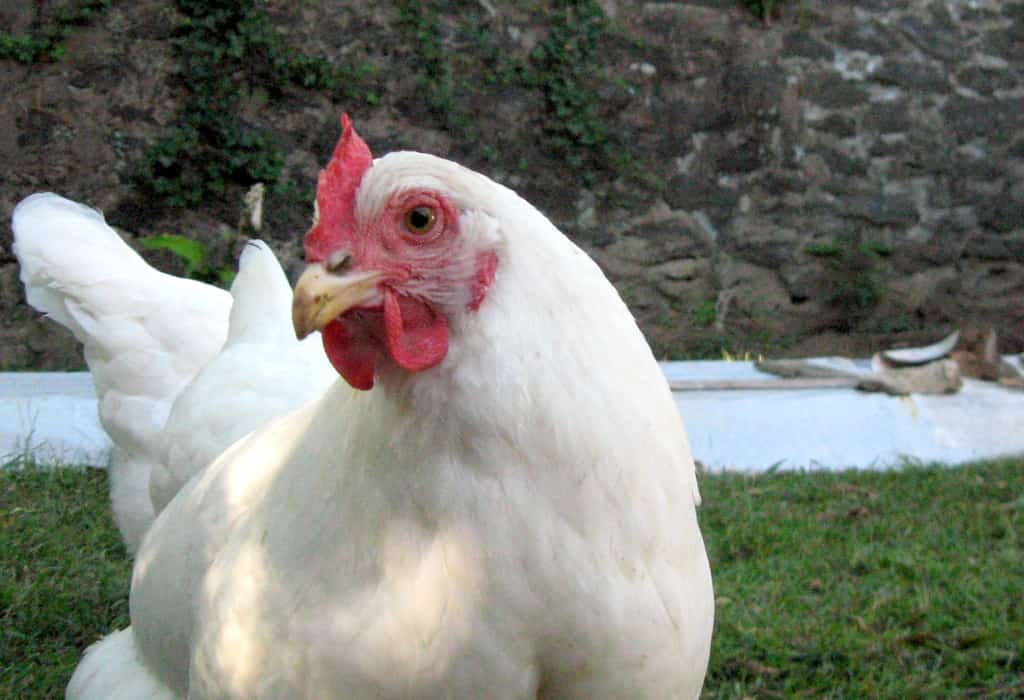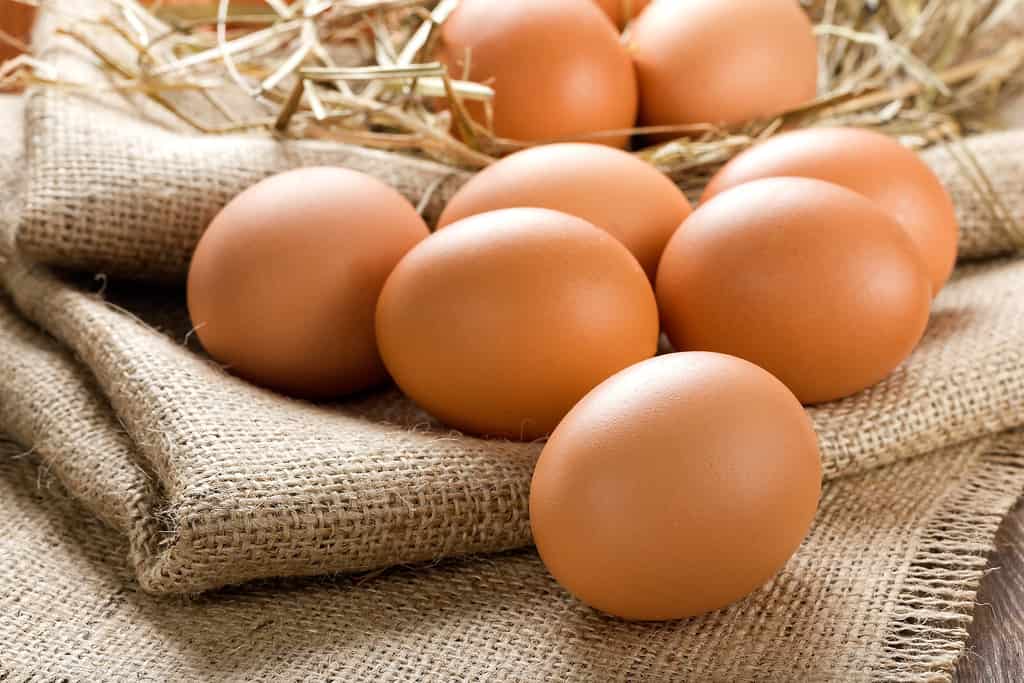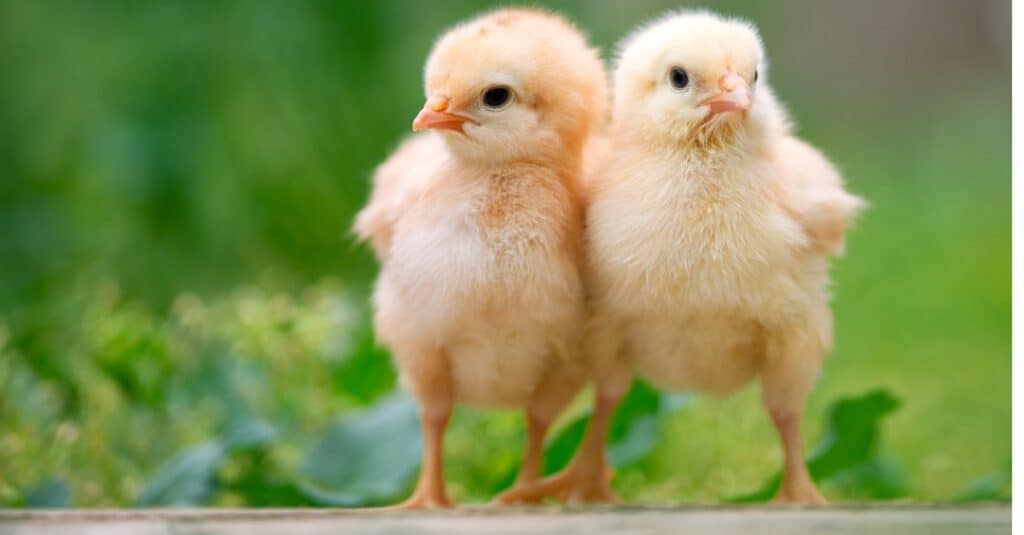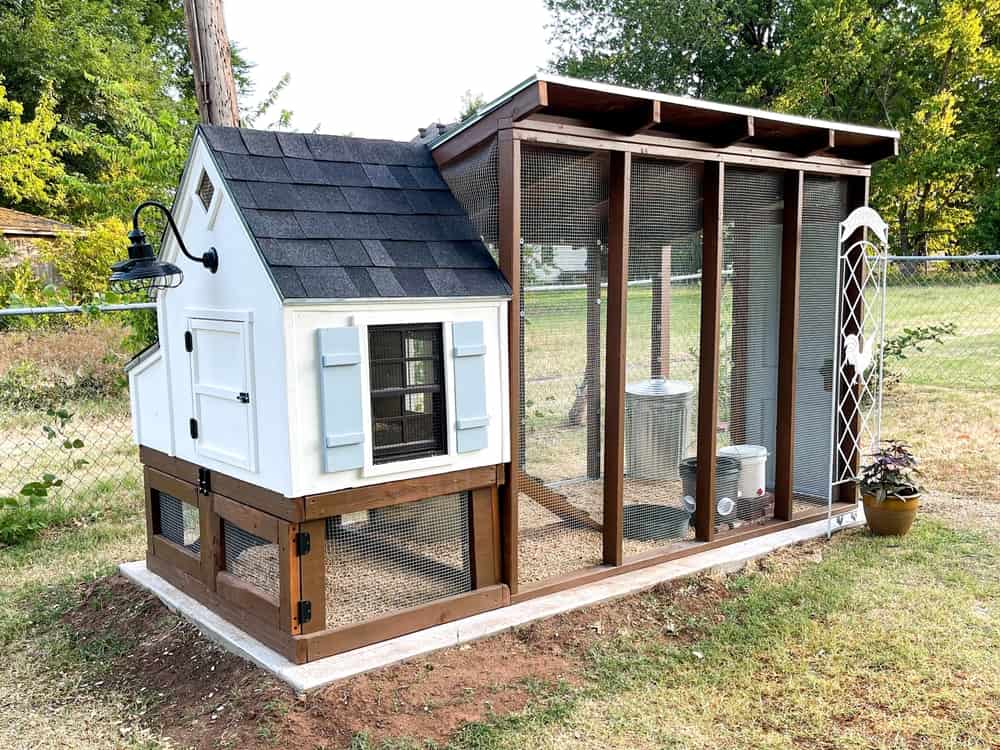If you’re an experienced chicken owner or considering starting your flock, you’ve probably researched breeds to determine which chickies are right for you. The Rhode Island White is a great egg layer that gets along with people. They have all-white plumage with rose combs. Roosters tend to be around 8 pounds while hens are a bit smaller at 6 or 6.5 pounds. If you’re looking for a chicken that lays plenty of eggs and is good for meat as well, consider the friendly Rhode Island White.
They can be a bit harder to find and pricey compared to other chicks. But as a friendly chicken that lays over 200 eggs annually, they will still be a great addition to your backyard. Once very popular, they became less common in recent years and are considered a heritage breed. Keep in mind that when bringing any breed of chicken into your life, you’ll have to set up the right environment for them. Baby chicks need a brooder while adult chickens require a safe coop with enclosed and open space.
Where Do Rhode Island White Chickens Come From?

The all-white plumage and rose comb are two of the most recognizable features of the Rhode Island White breed.
©Steven Johnson from Philadelphia / CC BY 2.0 – License
It’s probably not surprising given their name that Rhode Island White chickens were first bred in the U.S. state of Rhode Island. They were bred as a result of crossing other types of chickens, specifically Leghorns, Cochins, and Wyandottes. The first generation was a cross between White Wyandottes and Partridge Cochins. These birds were mated with White Cochins to create a bird made for roasting. The next generation introduced the Rose Comb White Leghorn. These offspring were what we typically see in Rhode Island White chickens today. They have rose combs.
With such detailed records, it is easy to track the development of this breed. They first appeared in the late 19th century and were recognized as a distinct breed by the American Poultry Association in the 1920s. They gained popularity over the next 40 or 50 years. Today, they are less common. That could be due to the popularity of another breed that often overshadows them: the Rhode Island Red.
But don’t confuse the Rhode Island White with the Rhode Island Red. They are two different breeds and even originated from different chickens when they first developed. Both were bred around the same time in Rhode Island, which is where the similarities between their origin stories end. Rhode Island Reds come from Java and Malay chickens, which is where their dark red or rust plumage comes from. They also have Cochin and Leghorn in their lineage, giving them similar body shapes to Rhode Island Whites. Rhode Island Reds were recognized by the American Poultry Association in 1904, more than 10 years before the Rhode Island White.
What Do Rhode Island Whites Look Like?

Rhode Island Whites have white feathers, red combs and wattles, and yellow skin.
©Ton Bangkeaw/Shutterstock.com
One of the defining characteristics of Rhode Island Whites is their white feathers. They are very dense and closely spaced. These birds do not come in other colors. They have rose combs and wattles. Males are the larger of the two at between 8 and 8.5 pounds. Females are a bit smaller at 6.5 pounds. But both sexes are quite large chickens in the flock. They are also known for their long bodies. Rhode Island Whites have yellow skin, which is most noticeable on their exposed legs. This sets them apart from White Orpingtons, which look similar at first glance.
Are Rhode Island White chickens Good Egg Layers?

Many varieties of chickens, including Rhode Island Whites, lay beautiful brown eggs of different shades.
©Sea Wave/Shutterstock.com
These chickens are great for meat or raising for eggs. You can count on hens to lay between 220 and 250 eggs each year. When they first gained popularity in the early 20th century, this breed frequently broke egg-laying records. According to the American Poultry Association’s records, 1918 was a particularly great year. One hen laid 291 eggs in the year and received awards at the All-Northwest egg-laying contest in Washington state. In the same year, another hen laid a whopping 306 eggs, setting a new record at the National egg-laying contest in Missouri.
Their eggs are large or extra-large brown eggs. One of the reasons that they can lay so many in a year is that hens continue to lay eggs during the winter months. They also start laying eggs earlier than some other breeds, often as early as 6 months old. This breed was created to showcase the desirable features of a roasting chicken. They make good meat chickens as well as egg layers.
How Much Do Rhode Island White Chickens Cost?

Rhode Island White chicks have fluffy yellow down but grow into their white feathers as adults.
©iStock.com/Tutye
Chicks generally cost between $3.50 and $5.25 each. Males are the cheapest, unsexed fall somewhere in the middle, and females cost the most. This is because females, as the egg layers, are the most in-demand for chicken owners. Unsexed chicks can be male or female but you won’t know when you purchase these chicks.
Like other breeds, Rhode Island Whites need to live in flocks. While they can be aggressive with other breeds, especially those that are more timid or docile, they still need companionship to thrive. Most of the time when purchasing new chicks, you’ll have to get at least 3. The exception to this is when you purchase only male chicks. You can add a single rooster to an existing flock. In fact, it can be better to keep your rooster numbers low relative to your hens. Overall, they are friendly and laid back.
Because they are relatively rare compared to some other breeds, you might have to search for Rhode Island White chicks. Fortunately, most breeders will ship day-old chicks or fertile eggs. Just make sure to purchase them from a reputable breeder that takes the appropriate steps to maintain a safe and healthy environment when breeding.
Setting up a new chicken coop

Your chicken coop should have secure indoor and outdoor space and you can decorate with chicken-themed accessories.
©Courtney Jenckes/Shutterstock.com
If you’re starting a flock, pretty soon you’ll need a space for them to roost, run, and live. A chicken coop is the option preferred by most owners, although these vary from DIY setups to elaborate luxury coops. The size needed will depend on the number of chickens in your flock and their breed. Generally, Rhode Island Whites need around 10 to 15 square feet per chicken inside the coop and an additional 25 to 30 square feet outside. This breed is on the large side so make sure that you have plenty of space. Keep in mind that you’ll need multiple chickens in your flock, a consideration to take into account when designing your coop and run space.
A great coop will include elevated spots for your hens to roost as well as an enclosed area with plenty of ventilation. Make sure to keep the coop predator-proof. If you live in an area where foxes, birds of prey, or other critters go after hens left to their own devices, a safe place for them to sleep is key.
Brooders for new chicks

Your brooder needs a feeding trough where multiple chicks can eat at the same time.
©iStock.com/Jennifer Chamblee
Most people starting a new flock will get chicks or fertile eggs to begin. These little chickies are adorable but need some special attention to get a good start in life. You can build a DIY brooder, another name for a warm habitat built for baby chicks. These spaces have a heat and UV lamp. This creates the right temperature as well as provides light that the chicks need to grow. Add a chick-sized feeding tray and water as well as soft bedding. As they grow, you can expand the size of the brooder until they are ready to move to the coop.
The photo featured at the top of this post is © Thussapon.28/Shutterstock.com
Thank you for reading! Have some feedback for us? Contact the AZ Animals editorial team.







